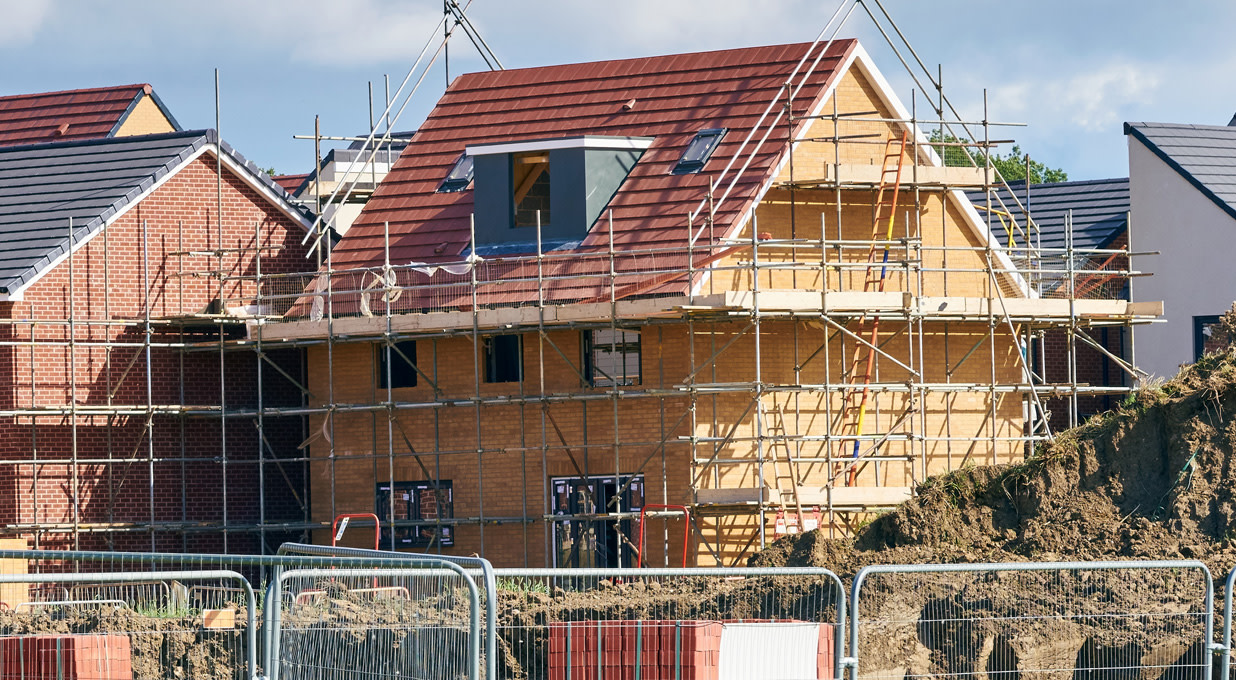Barratt Redrow’s average weekly net private sales rates rose 16.4% to 0.64, with the average selling price rising 2.8% to around £380,000.
16,565 new homes were completed last year, below the group’s 16,800-17,200 guidance range due to softer-than-expected demand for its London homes.
The order book improved to £2.9bn, while build cost inflation remained broadly flat. Barratt had a net cash position of around £772mn at year-end.
The integration of Barratt and Redrow delivered £69mn of cost savings last year. This means that 2025 full-year underlying pre-tax profits are expected to land in line with market expectations of £583mn, despite the shortfall of home completions.
Barratt expects to deliver between 17,200-17,800 new homes in the new year, with build cost inflation running between 1-2%. Due to additional building safety charges relating to legacy properties, 2026 full-year pre-tax profits are expected to be around £640mn (consensus: £712mn).
The shares fell 10.0% in early trading.
Our view
Barratt Redrow’s full-year update was a bit of a mixed bag. Cost savings from the integration of the Barratt and Redrow businesses have helped keep 2025 profits in line with analyst forecasts. But new building safety charges look set to weigh on 2026 profits, which caused the share price to fall on the day.
Despite some hurdles, such as higher stamp duty and slow changes to increasing planning approvals, sales rates have been moving in the right direction. Revenue and cost benefits are continuing to build as the integration of Barratt and Redrow is nearing completion. If operations can be streamlined and new homes delivered as expected, there’s plenty of opportunity for profits to rebound over the medium term. But as with any merger, there will be challenges.
Together, Barratt Redrow fell slightly short of its guidance to build between 16,800 and 17,200 new homes last year, in large part due to softer demand across London. We’re seeing that trend across the sector as affordability issues persist. It’s not a major issue for now, but it means the medium-term target to deliver up to 22,000 homes annually could take a while to reach.
Not only has the acquisition increased Barratt’s geographical reach, but it’s also increased the different types of customers it appeals to. The Redrow brand focuses on larger, higher-quality homes for more affluent buyers. The higher average selling prices of these homes should be a major positive for margins moving forward.
The order book is in good shape and growing, and there’s a strong landbank ready to be unleashed when the housing market recovers. Markets are pricing at least two more interest rate cuts over 2025, which should ease mortgage availability and affordability pressures for buyers. Barratt Redrow looks well placed to be buoyed by the rising tide.
On the balance sheet side, structuring the acquisition of Redrow as a share offer means there’s still a sizable net cash position. That gives flexibility to cope with any bumps in the road in the near term. Barratt’s increased scale means it’s expecting to limit build cost inflation to between 1-2% this year.
Barratt Redrow now has a strong landbank to unleash when the market picks back up. It’ll likely be a year or so before major benefits start to feed through to profits, and there are no guarantees. In the meantime, Barratt's valuation isn’t overly demanding, a reflection of the tricky market conditions.
Environmental, social and governance (ESG) risk
Most housebuilders are relatively low risk in terms of ESG, particularly for those in Europe. However, there are some environmental risks to consider, from direct emissions to the impact of their buildings on the local ecology. The quality and safety of their buildings is also a key risk.
According to Sustainalytics, Barratt Redrow’s management of ESG risk is strong.
Commitments are in place to deliver net zero houses by 2030 through a combination of energy-efficient equipment, the use of renewables and the establishment of alternative heating technologies. While Barratt reports that all its revenues come from sustainable products, the total portion of recycled materials used in its operations is undisclosed.
Barratt Redrow key facts
All ratios are sourced from LSEG Datastream, based on previous day’s closing values. Please remember yields are variable and not a reliable indicator of future income. Keep in mind key figures shouldn’t be looked at on their own – it’s important to understand the big picture.
This article is not advice or a recommendation to buy, sell or hold any investment.No view is given on the present or future value or price of any investment, and investors should form their own view on any proposed investment.This article has not been prepared in accordance with legal requirements designed to promote the independence of investment research and is considered a marketing communication.Non - independent research is not subject to FCA rules prohibiting dealing ahead of research, however HL has put controls in place(including dealing restrictions, physical and information barriers) to manage potential conflicts of interest presented by such dealing.Please see our full non - independent research disclosure for more information.


